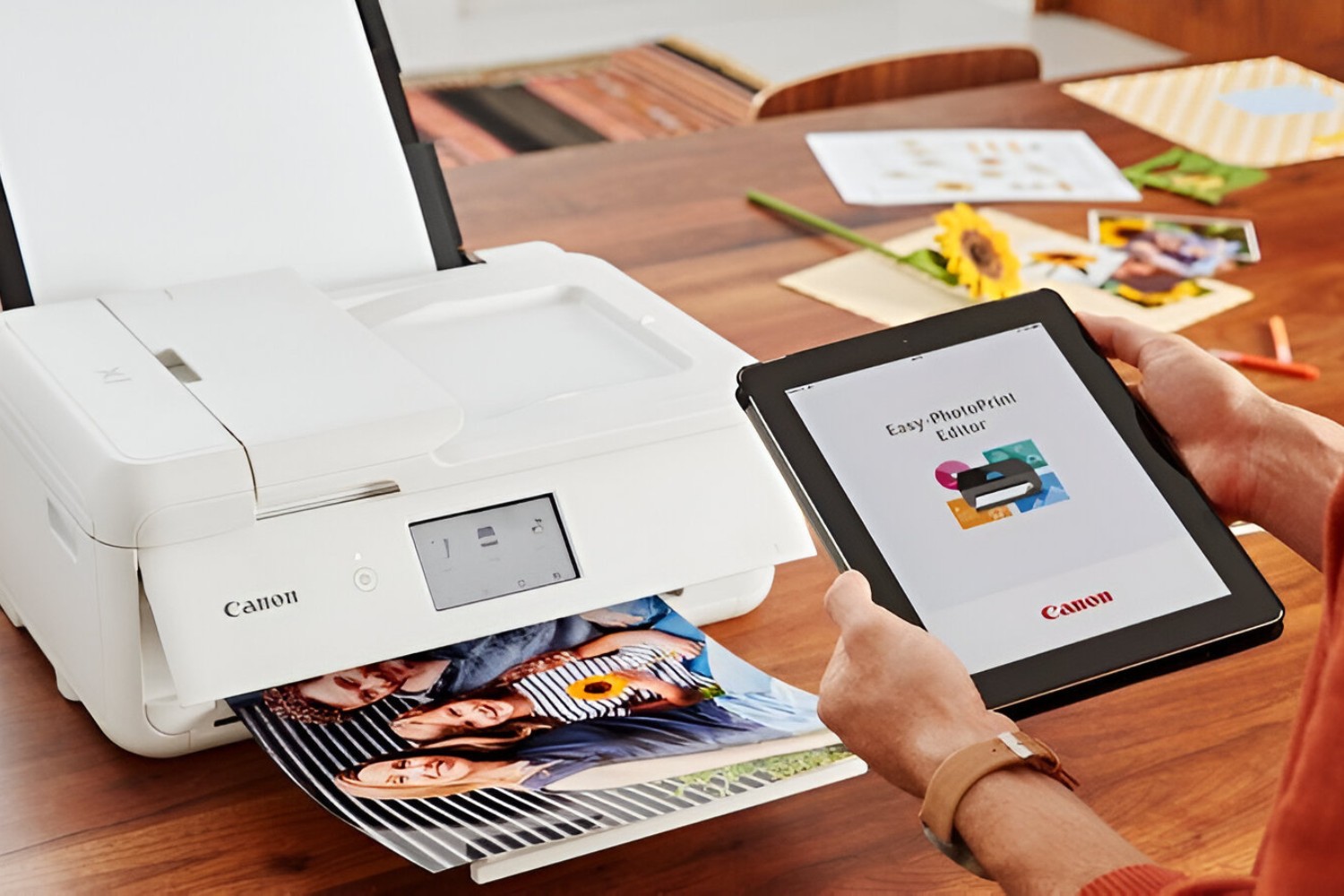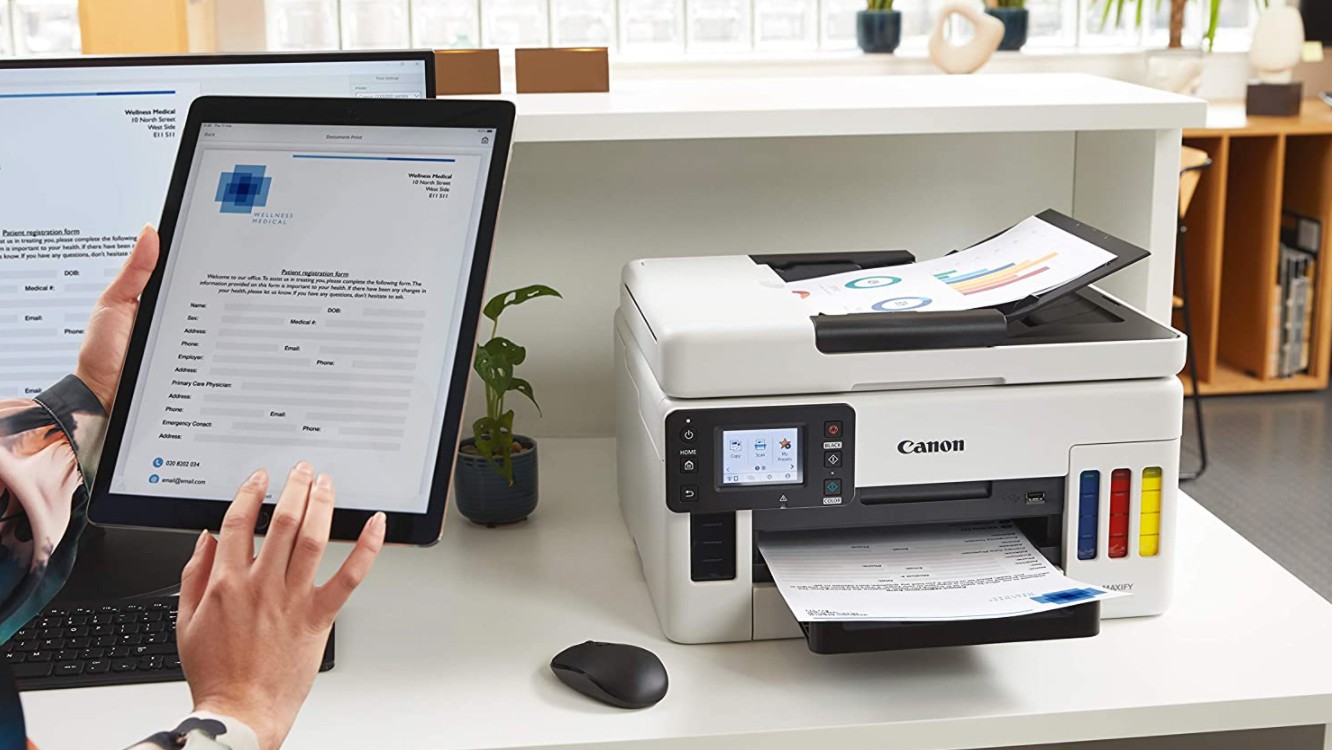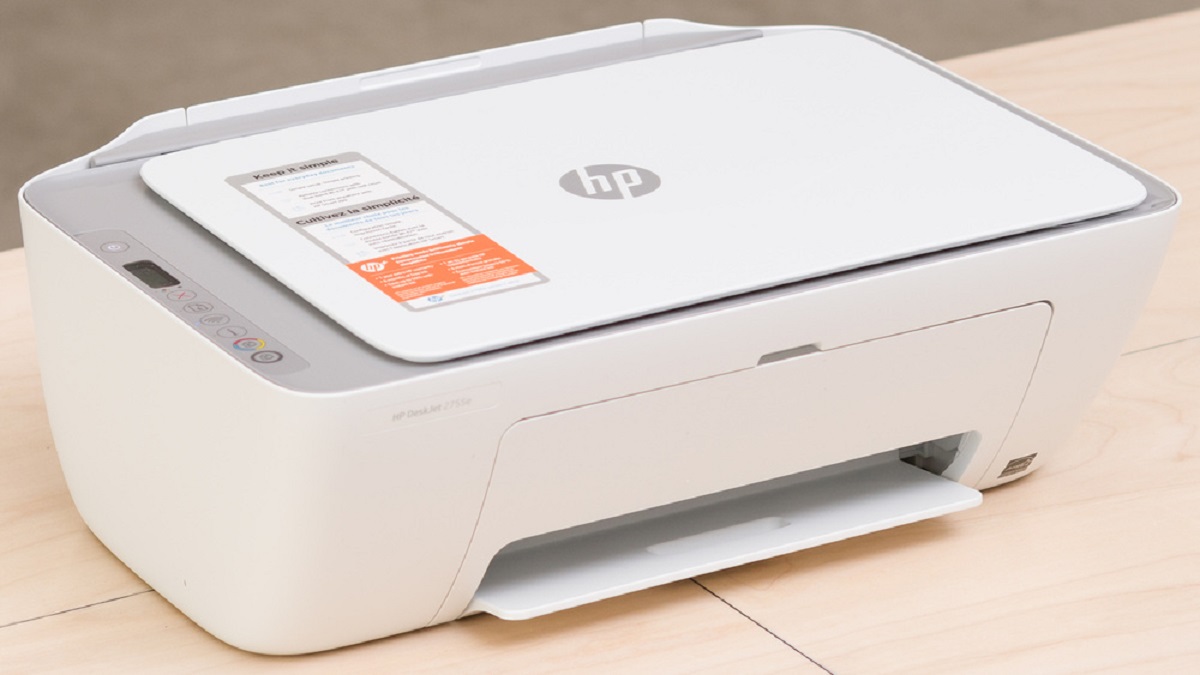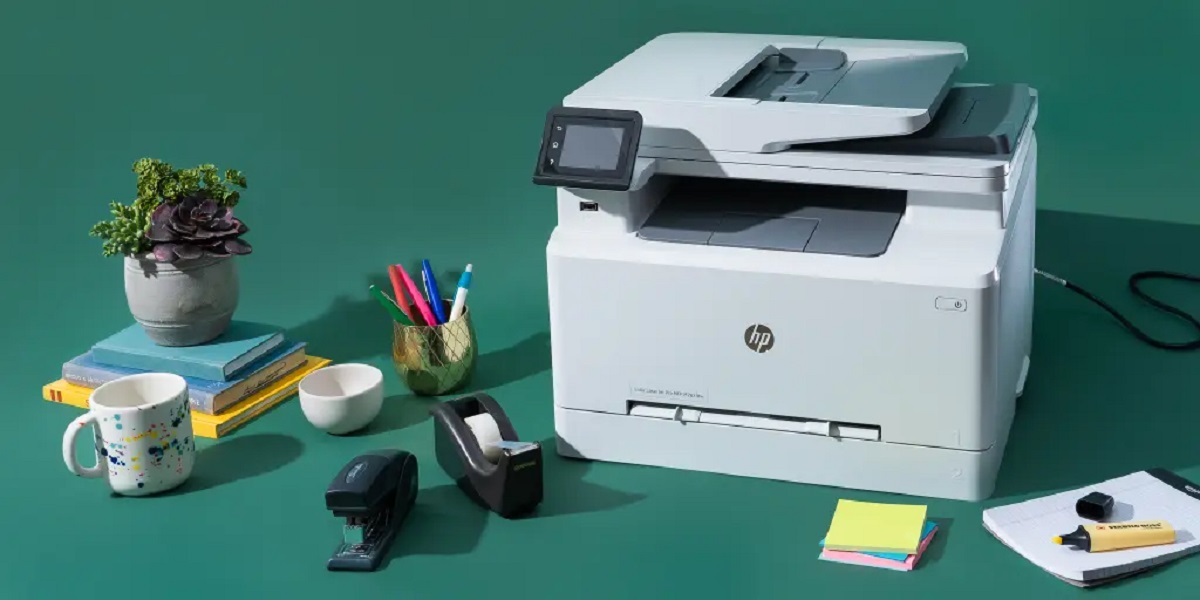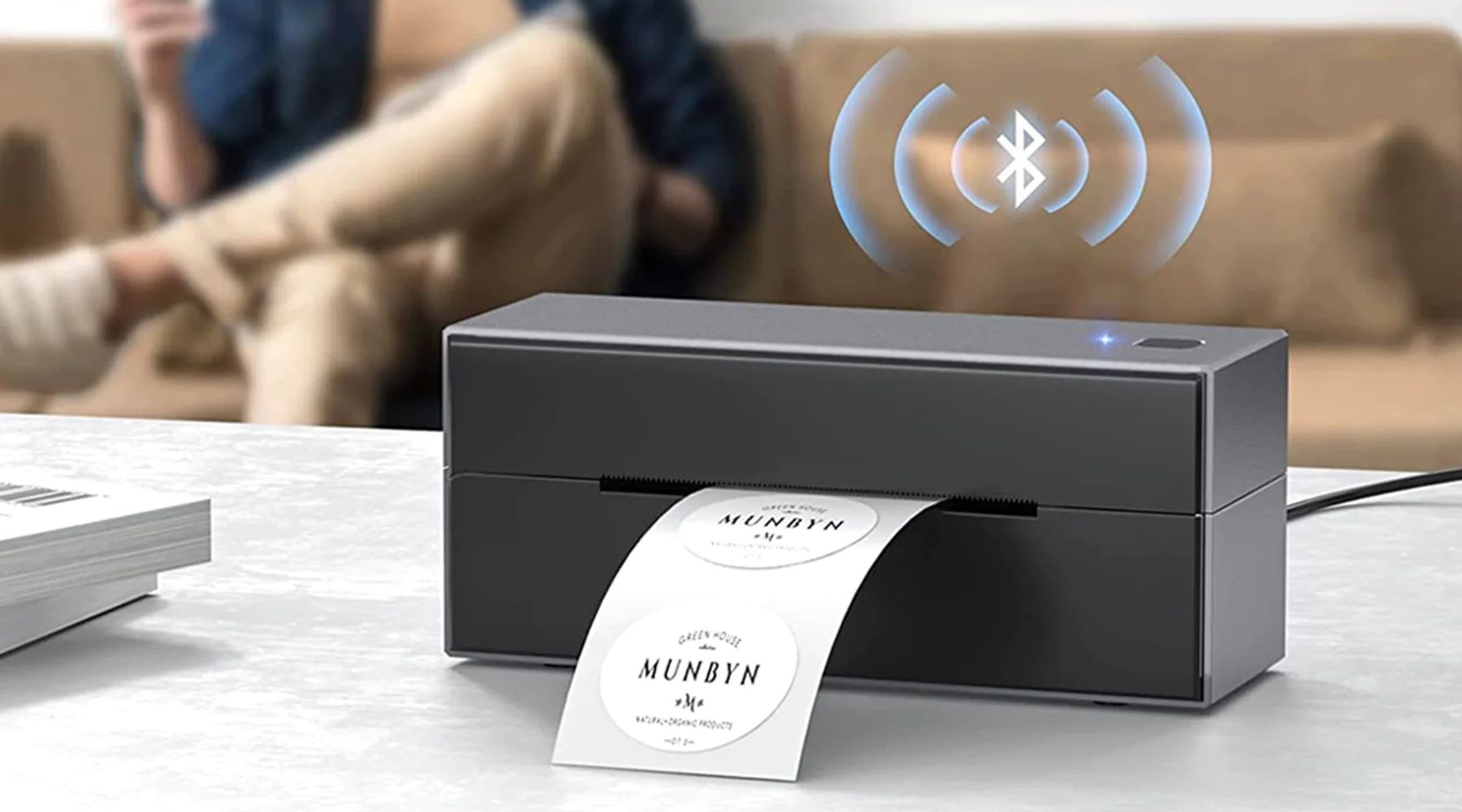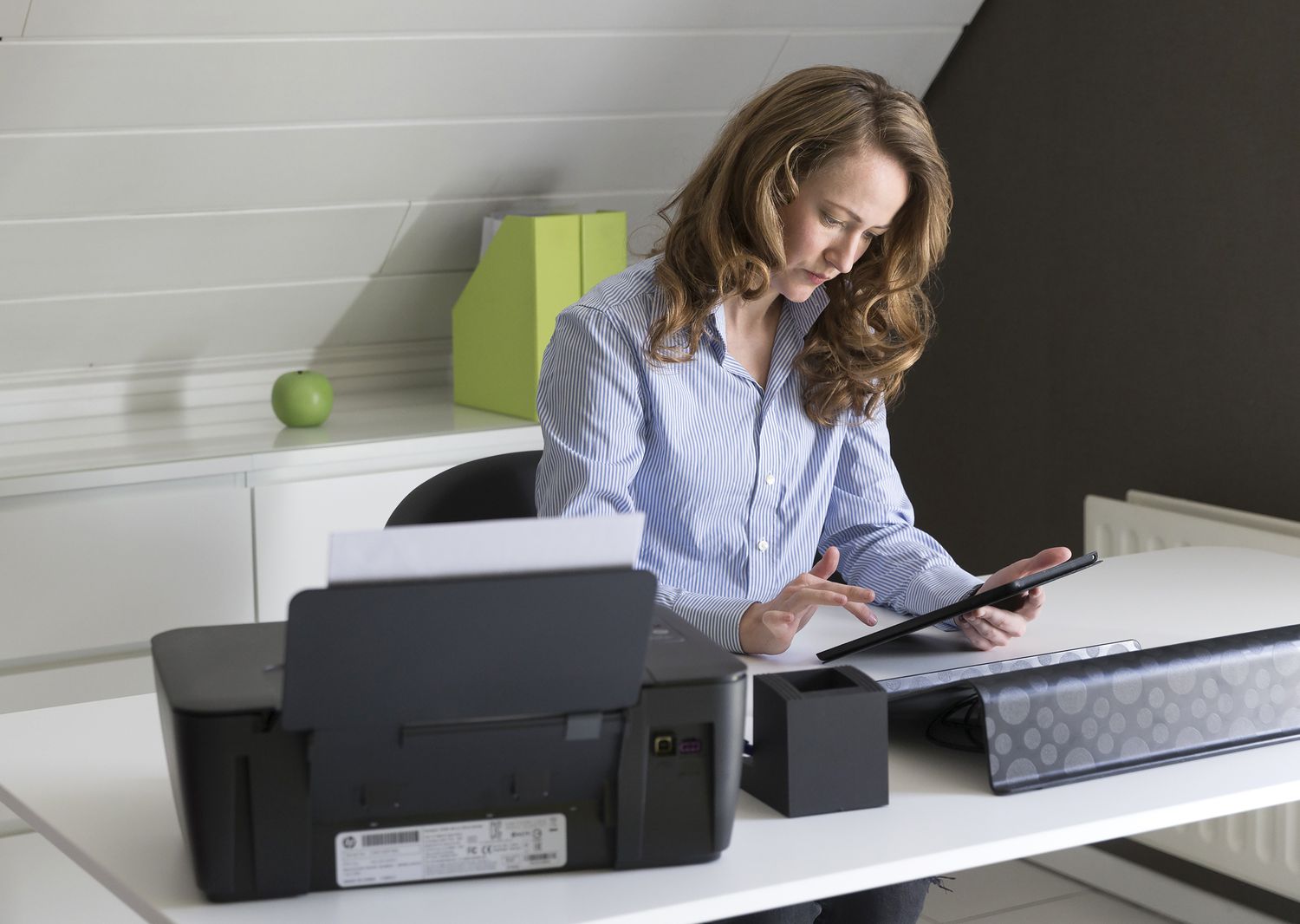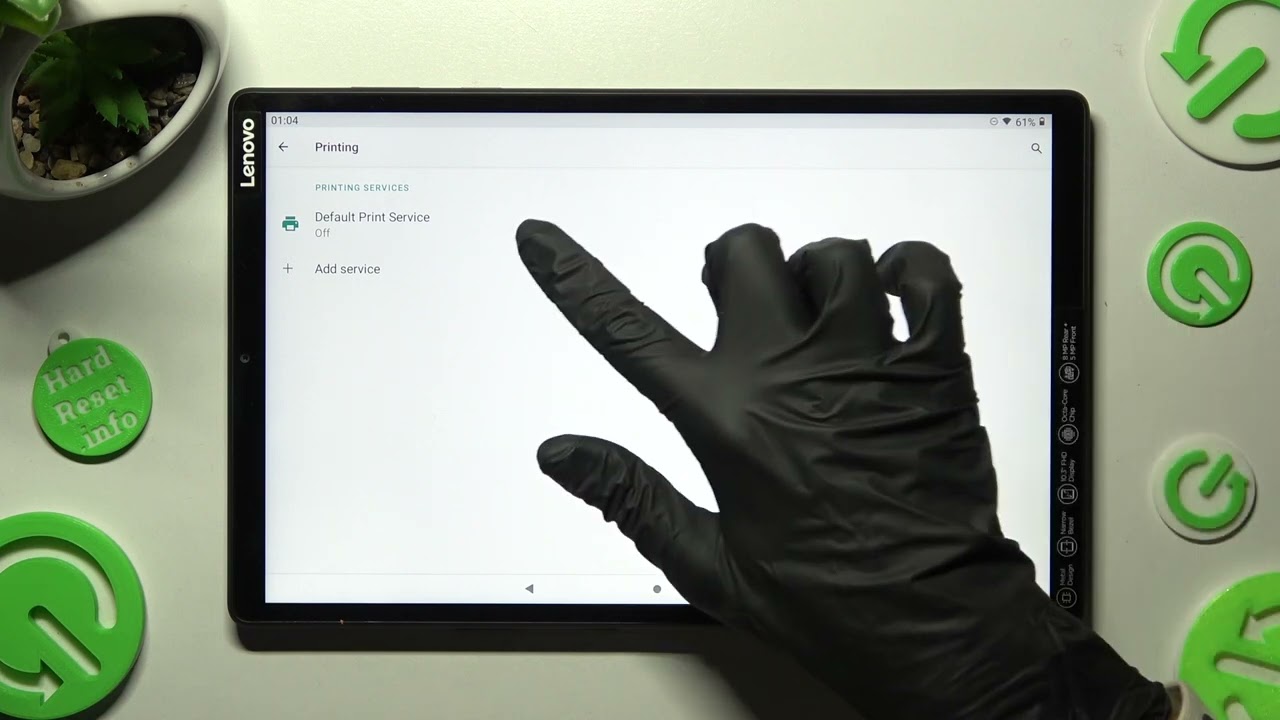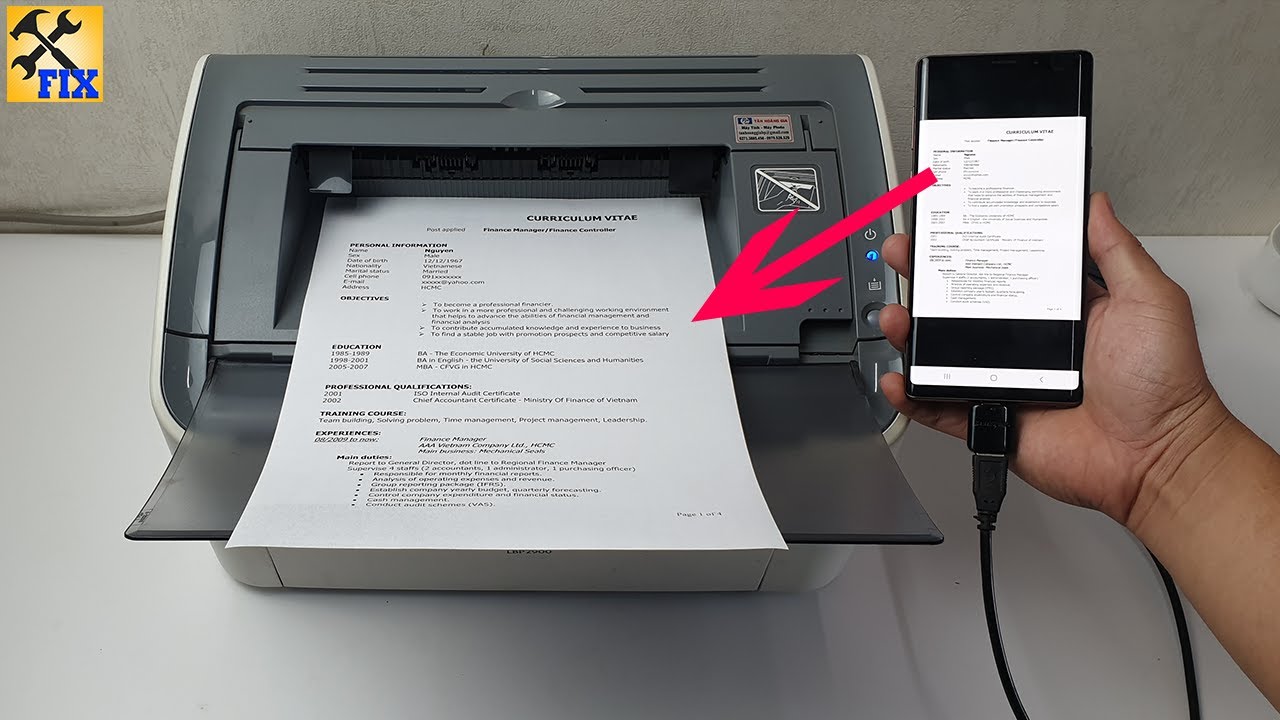Introduction
Printing from a tablet to a Wi-Fi printer has become a necessity in today’s digital age. Whether you need to print important documents, boarding passes, or photos, the convenience of wireless printing brings efficiency and flexibility to your fingertips. With just a few simple steps, you can easily connect your tablet to a Wi-Fi printer and start printing seamlessly.
Gone are the days when you had to transfer files to a computer before finding a printer to connect to. Now, using your tablet as a portable printing device allows you to print directly from your favorite apps, email, cloud storage, and more. So, whether you have an iPad, Android tablet, or any other tablet model, this guide will walk you through the various methods to print wirelessly to your Wi-Fi printer.
In this article, we will explore different methods to connect your tablet to a Wi-Fi printer. We will cover popular platforms like iOS and Android, as well as alternative options using manufacturer’s apps and third-party printing apps. Additionally, we will provide troubleshooting tips to overcome common connectivity issues you may encounter.
Before diving into the different methods, it’s essential to understand how Wi-Fi printers work. Unlike traditional printers that require a direct physical connection to your device, Wi-Fi printers connect wirelessly to your tablet or other devices that are on the same Wi-Fi network. This eliminates the need for cables and allows you to print from anywhere within the range of your Wi-Fi network.
So, whether you’re a professional in need of printing important documents on the go or a student wanting to print assignments from your tablet, this guide will equip you with the knowledge and skills to print effortlessly from your tablet to a Wi-Fi printer. Follow along with the step-by-step instructions provided in each method, and soon you’ll be enjoying the convenience of wireless printing.
Understanding Wi-Fi Printers
Wi-Fi printers, also known as wireless printers, are printers that can be connected to a network without the need for any physical cables. These printers use Wi-Fi technology to establish a wireless connection with devices such as tablets, smartphones, laptops, and computers. This allows users to print documents, photos, and other files directly from their devices to the printer without the hassle of connecting cables.
Wi-Fi printers offer numerous advantages over traditional wired printers. One of the main benefits is the convenience and flexibility they provide. With a Wi-Fi printer, you can print from anywhere within the range of your Wi-Fi network. Gone are the days of having to be physically present near the printer or connecting your device directly to it.
Another advantage of Wi-Fi printers is the ability to connect multiple devices to a single printer. Once the printer is connected to the Wi-Fi network, any device on the same network can send print jobs to it. This is especially useful in households or offices where multiple devices need to access the printer.
Wi-Fi printers are available in various types and models, including inkjet printers, laser printers, and all-in-one printers that can also scan and copy documents. It’s important to choose a printer that suits your specific needs and requirements. Consider factors such as print quality, speed, cost of ink or toner cartridges, and additional features like duplex printing or mobile printing capabilities.
Setting up a Wi-Fi printer is usually a straightforward process, and most modern printers come with a set of instructions to guide you through the setup. The printer will typically prompt you to connect it to your Wi-Fi network by entering the network name (SSID) and password. Once connected, the printer will appear as an available device on your network, allowing you to send print jobs to it from your tablet or other devices.
It’s worth noting that not all printers support wireless printing by default. Some older models may require additional hardware, such as a wireless print server, to enable Wi-Fi connectivity. However, many modern printers now come equipped with built-in Wi-Fi capabilities, making the setup process much simpler.
In the next sections, we will explore different methods to connect your tablet to a Wi-Fi printer, enabling you to print wirelessly without any hassle. Whether you have an iOS or Android device, or prefer using specific manufacturer’s apps or third-party printing apps, we’ve got you covered. So, without further ado, let’s dive into the step-by-step instructions for each method.
Connecting Tablet to Wi-Fi Printer
Connecting your tablet to a Wi-Fi printer allows you to print wirelessly from your device. The process may vary slightly depending on your tablet’s operating system (iOS or Android) and printer model. In this section, we will explore different methods to connect your tablet to a Wi-Fi printer. Follow the step-by-step instructions for each method to ensure a successful connection.
Method 1: Using AirPrint (iOS devices)
If you own an iPad or iPhone, you can take advantage of Apple’s AirPrint technology to connect your iOS device to a Wi-Fi printer. Most modern printers are compatible with AirPrint, making it a convenient option for iOS users. Simply follow these steps:
- Make sure your iOS device and Wi-Fi printer are connected to the same Wi-Fi network.
- Open the app or document you want to print from.
- Select the share button (usually represented by a square with an arrow) to bring up the sharing options.
- Tap on the Print option from the sharing menu.
- Choose your Wi-Fi printer from the available printers.
- Adjust any print settings if necessary, such as the number of copies or paper size.
- Tap Print, and your document will be sent to the Wi-Fi printer wirelessly.
Method 2: Using Google Cloud Print (Android devices)
For Android users, Google Cloud Print offers a seamless way to connect your tablet to a Wi-Fi printer. Make sure your printer is Google Cloud Print compatible and follow these instructions:
- Open the Google Chrome browser on your tablet.
- Tap the three-dot menu icon in the top right corner and go to Settings.
- Scroll down to the Google Cloud Print section and tap on it.
- Sign in to your Google account if you haven’t already.
- Tap the Set up Cloud Print button and follow the prompts to add your printer to Google Cloud Print.
- Once your printer is added, open the document or file you want to print.
- Tap the three-dot menu icon in the top right corner and select Print.
- Choose your printer from the list of available printers.
- Adjust any print settings and tap the Print button to send the document to your Wi-Fi printer wirelessly.
Method 3: Using Manufacturer’s App
Many printer manufacturers offer dedicated apps that allow seamless printing from your tablet to a Wi-Fi printer. These apps are available for both iOS and Android devices and provide advanced printing options and features. Here’s how to connect using a manufacturer’s app:
- Download and install the manufacturer’s app from the App Store (for iOS) or Google Play Store (for Android).
- Open the app and follow the prompts to connect your tablet to your Wi-Fi printer.
- Select the document or file you want to print from within the app.
- Adjust any print settings if necessary.
- Tap the Print button, and your document will be sent wirelessly to the Wi-Fi printer.
Method 4: Using Third-Party Printing Apps
If your printer doesn’t have a dedicated app or you prefer more customization options, you can explore third-party printing apps available for both iOS and Android devices. These apps offer additional features and compatibility with various printer models. To connect using a third-party printing app:
- Download and install a reputable third-party printing app from the App Store (for iOS) or Google Play Store (for Android).
- Open the app and follow the setup instructions to connect your tablet to your Wi-Fi printer.
- Select the document or file you want to print within the app.
- Adjust print settings if needed.
- Tap the Print button, and the app will send the document wirelessly to the Wi-Fi printer.
Connecting your tablet to a Wi-Fi printer opens up a world of convenient and wireless printing. Whether you choose to use AirPrint, Google Cloud Print, manufacturer’s apps, or third-party printing apps, you can enjoy the flexibility of printing directly from your tablet. Now that you know the different methods, let’s move on to troubleshooting any common issues you may come across during the connection process.
Method 1: Using AirPrint (iOS devices)
AirPrint is an Apple technology that allows iOS devices, such as iPads and iPhones, to connect wirelessly to compatible printers. With AirPrint, you can print directly from your iOS device without the need for additional apps or software. Here’s how to use AirPrint to connect your iOS device to a Wi-Fi printer:
- Ensure that your iPad or iPhone and the Wi-Fi printer are connected to the same Wi-Fi network.
- Open the app or document you want to print from on your iOS device.
- Look for the share button within the app, usually represented by a square with an arrow pointing upwards or a printer icon.
- Tap on the share button to bring up the sharing options.
- In the sharing options, locate and tap on the Print option. This will open the Print settings menu.
- From the list of available printers, select your Wi-Fi printer. If your printer isn’t listed, make sure it is AirPrint compatible.
- Adjust any print settings as necessary, such as the number of copies or paper size.
- Once you have reviewed the settings, tap on the Print button to send the print job to your Wi-Fi printer.
The print job will be transmitted wirelessly from your iOS device to the AirPrint-enabled Wi-Fi printer. Depending on the size and complexity of the document, it may take a few moments for the printer to process the print job and produce the physical copy.
It’s worth noting that some apps may have a slightly different layout or placement of the share button, but the Print option should still be accessible from within the sharing options. Furthermore, AirPrint is built-in on most iOS devices, so you won’t need to install any additional software or apps to utilize this feature.
If you encounter any issues while using AirPrint, ensure that both your iOS device and the Wi-Fi printer are connected to the same network and that they are both powered on. Additionally, make sure that your Wi-Fi printer is AirPrint compatible. If you’re still experiencing difficulties, refer to the printer’s manual for specific troubleshooting steps or contact the manufacturer’s support for further assistance.
AirPrint is a reliable and straightforward method for connecting iOS devices to Wi-Fi printers. It provides a seamless printing experience, allowing you to print documents, photos, and more directly from your iPad or iPhone. Whether you’re at home, in the office, or on the go, AirPrint makes wireless printing effortless and convenient.
Now that you know how to use AirPrint to connect your iOS device to a Wi-Fi printer, let’s explore another method: using Google Cloud Print for Android devices.
Method 2: Using Google Cloud Print (Android devices)
Google Cloud Print is a service provided by Google that allows you to connect your Android device to a Wi-Fi printer. With Google Cloud Print, you can print from your Android device to any printer that is connected to the service, even if the printer is not physically connected to your network. Here’s how to use Google Cloud Print with your Android device:
- Make sure your Android device and the Wi-Fi printer are connected to the same Wi-Fi network.
- On your Android device, open the Google Chrome browser.
- Tap the three-dot menu icon in the top right corner to open the browser menu.
- Scroll down and select “Settings” to access the browser settings.
- In the settings menu, scroll down to find the “Google Cloud Print” section and tap on it.
- Tap the “Set up Cloud Print” button to begin setting up your printer with Google Cloud Print.
- Follow the on-screen prompts to sign in to your Google account and select the printer you want to add to Google Cloud Print.
- Once you have added your printer, open the document or file you want to print on your Android device.
- Tap the three-dot menu icon in the top right corner of the screen to open the options menu.
- Select the “Print” option from the menu.
- Choose your printer from the list of available printers that are connected to Google Cloud Print.
- Adjust any print settings, such as the number of copies or paper size, if needed.
- Tap the “Print” button to send the print job to your Wi-Fi printer via Google Cloud Print.
The print job will be transmitted from your Android device to the Google Cloud Print service, which will then send it to your Wi-Fi printer. As long as your Android device and printer are connected to the internet, you will be able to print wirelessly using Google Cloud Print.
Google Cloud Print works with most printers that support Wi-Fi or are connected to a computer that has the Google Chrome browser installed. It’s important to note that some printers may require additional setup or firmware updates to work with Google Cloud Print. Refer to your printer’s documentation or the manufacturer’s website for specific instructions.
If you encounter any issues while using Google Cloud Print, ensure that your Android device and the Wi-Fi printer are connected to the same network and that they are both powered on. Additionally, make sure you have set up your printer correctly with Google Cloud Print and that the printer supports the service.
Google Cloud Print provides Android users with a convenient and flexible way to print wirelessly from their devices. It eliminates the need for direct physical connections and allows you to print from anywhere as long as you have an internet connection. Take advantage of this seamless printing method and enjoy the convenience it offers.
Next, we will explore another option: using a manufacturer’s app to connect your tablet to a Wi-Fi printer.
Method 3: Using Manufacturer’s App
Many printer manufacturers provide dedicated mobile apps that allow you to connect your tablet to a Wi-Fi printer. These apps offer advanced printing features and customization options, making them a great choice for optimizing your printing experience. Here’s how to use a manufacturer’s app to connect your tablet to a Wi-Fi printer:
- Start by downloading and installing the manufacturer’s app from either the App Store (for iOS) or the Google Play Store (for Android). Make sure to choose the app that corresponds to your printer’s brand.
- Open the downloaded app and follow the on-screen prompts to set up the connection between your tablet and the Wi-Fi printer. This might involve selecting your printer model from a list or scanning a QR code on the printer.
- Once the connection is established, you will have access to a range of printing options and settings within the app.
- Open the document or file you want to print on your tablet.
- Using the manufacturer’s app, navigate to the printing section or tap on the print icon.
- Choose the desired print settings, such as page orientation, paper size, and quality.
- When ready, initiate the printing process by tapping the “Print” button in the app.
- The manufacturer’s app will transmit the print job wirelessly to your Wi-Fi printer, which will then produce the printed document.
Using a manufacturer’s app ensures seamless compatibility between your tablet and the Wi-Fi printer. These apps often provide additional features, such as the ability to scan documents, check ink levels, or manage print queues. They also simplify the printing process by offering a user-friendly interface and intuitive controls.
It’s worth noting that each manufacturer’s app may have a slightly different user interface and set of available features. Therefore, it’s essential to explore the specific functionalities provided by the app associated with your printer. Additionally, these apps may require periodic updates to ensure compatibility with the latest operating systems and printer firmware.
If you encounter any issues while using the manufacturer’s app, ensure that your tablet and the Wi-Fi printer are connected to the same network and that both devices are powered on. You can also refer to the app’s user guide, FAQs, or support resources provided by the printer manufacturer for further troubleshooting assistance.
Utilizing a manufacturer’s app is a fantastic option for maximizing your tablet’s printing capabilities. By connecting your tablet to a Wi-Fi printer through the app, you can enjoy a seamless and efficient printing experience with advanced customization options. Explore the features offered by the app associated with your printer and enhance your printing experience today.
Next, we will explore another alternative: using third-party printing apps to connect your tablet to a Wi-Fi printer.
Method 4: Using Third-Party Printing Apps
If you’re looking for additional functionality and customization options, using third-party printing apps can be a great solution for connecting your tablet to a Wi-Fi printer. These apps offer a wide range of features and support various printer models, allowing you to maximize your printing capabilities. Here’s how to use a third-party printing app to connect your tablet to a Wi-Fi printer:
- Start by downloading and installing a reputable third-party printing app from the App Store (for iOS) or the Google Play Store (for Android).
- Launch the app and follow the on-screen instructions to set up the connection between your tablet and the Wi-Fi printer. This may involve selecting your printer model, entering the IP address of the printer, or scanning a QR code.
- Once the setup is complete, the app will provide you with a range of printing options and settings.
- Open the document or file you want to print using the app’s document viewer or file manager.
- Select the print option within the app, usually represented by a print icon or an option in the sharing menu.
- Customize the print settings, including paper size, quality, and number of copies.
- When you’re ready, initiate the printing process by tapping the “Print” button or a similar prompt within the app.
- The third-party printing app will transmit the print job wirelessly to your Wi-Fi printer, which will then print the document according to your specified settings.
Third-party printing apps offer extensive features, such as print preview, support for various file formats, and the ability to print directly from cloud storage services. Some apps even allow you to manage multiple printers, set printing profiles, or schedule print jobs. The availability and functionality of these features may vary depending on the specific app you choose to install.
It’s important to note that while third-party printing apps can provide extended functionality, they may require additional setup or configuration compared to manufacturer’s apps or built-in printing methods. Moreover, it’s advisable to choose a reputable app with positive user reviews and regular updates to ensure compatibility and security.
If you encounter any issues while using a third-party printing app, ensure that your tablet and the Wi-Fi printer are connected to the same network. You can also refer to the help section or support resources within the app for troubleshooting guidance or contact the app developer directly for assistance.
Using third-party printing apps expands your printing possibilities and allows you to tailor the printing experience to your specific needs. With their advanced features and compatibility with various printer models, these apps provide a versatile solution for connecting your tablet to a Wi-Fi printer.
Now that you have explored all the methods available for connecting your tablet to a Wi-Fi printer, you can choose the option that best suits your preferences and printing requirements. Whether you opt for AirPrint, Google Cloud Print, a manufacturer’s app, or a third-party printing app, you will enjoy the convenience and flexibility of wireless printing from your tablet.
Troubleshooting Common Issues
While connecting your tablet to a Wi-Fi printer is generally straightforward, you may encounter some common issues along the way. Here are a few troubleshooting steps you can take to resolve these problems and ensure a smooth printing experience:
1. Check Connectivity: Ensure that your tablet and Wi-Fi printer are connected to the same Wi-Fi network. Double-check that both devices have a stable internet connection and are powered on.
2. Verify Printer Compatibility: Make sure your Wi-Fi printer is compatible with the method you are using to connect (e.g., AirPrint, Google Cloud Print). Refer to your printer’s manual or the manufacturer’s website to confirm compatibility.
3. Update Firmware and Apps: Keep your tablet, printer, and printing apps up to date. Check for any available firmware updates for your printer and update your tablet’s operating system and printing apps to the latest versions.
4. Restart Devices: Sometimes, a simple restart can resolve connectivity issues. Turn off your tablet and Wi-Fi printer, wait a few seconds, and then turn them back on.
5. Reinstall Printer Drivers or Apps: If you are using a manufacturer’s app or third-party printing app, try reinstalling it to ensure all necessary components are properly installed. Similarly, if you’re using a computer to connect to the printer, reinstalling the printer driver may help resolve any driver-related issues.
6. Clear Print Queue: If you notice that your print jobs are not being processed, there may be a stuck print job in the print queue. Clear the print queue, either from your tablet or by accessing the printer’s settings.
7. Check Printer Status: Ensure that your Wi-Fi printer has enough paper and ink or toner to complete the print jobs. Address any error messages or alerts displayed on the printer’s control panel or through the printing app.
8. Reset Network Settings: If all else fails, try resetting the network settings on your tablet and Wi-Fi printer. This will remove any saved Wi-Fi connections and allow you to establish a fresh connection.
If you still encounter issues, consult the troubleshooting section of your printer’s manual or visit the manufacturer’s support website for further assistance. You can also reach out to customer support for help in resolving any technical difficulties you may face.
By troubleshooting common issues, you can overcome any obstacles that may arise during the connection process. These troubleshooting steps will help ensure a seamless printing experience for your tablet and Wi-Fi printer, allowing you to effortlessly print your documents, photos, and other files.
Conclusion
Printing wirelessly from your tablet to a Wi-Fi printer brings convenience and flexibility to your everyday tasks. By connecting your tablet to a Wi-Fi printer, you can effortlessly print documents, photos, and more without the need for cables or direct physical connections. In this comprehensive guide, we explored various methods to connect your tablet to a Wi-Fi printer, including AirPrint for iOS devices, Google Cloud Print for Android devices, manufacturer’s apps, and third-party printing apps.
With AirPrint, iOS users can take advantage of Apple’s built-in technology to print directly from their iPads or iPhones. Google Cloud Print offers a seamless solution for connecting Android devices to Wi-Fi printers. Manufacturer’s apps provide dedicated printing options tailored to specific printer models, while third-party printing apps offer extended functionality and customization.
Throughout the guide, we also discussed troubleshooting common issues that may occur during the connection process. By following the troubleshooting steps outlined, you can overcome connectivity challenges and ensure a smooth printing experience.
Whether you’re a student, professional, or simply someone who needs to print on the go, connecting your tablet to a Wi-Fi printer gives you the freedom to print from anywhere within your network’s range. Embrace the convenience and efficiency of wireless printing, and enjoy the benefits it brings to your daily routine.
Remember to keep your tablet, printer, and printing apps updated to utilize the latest features and ensure compatibility. Also, consult your printer’s manual and the manufacturer’s website for specific instructions and support regarding your printer model.
As technology continues to evolve, printing from tablets to Wi-Fi printers will become even more streamlined and intuitive. Stay up to date with the latest advancements in wireless printing to make the most of your tablet’s printing capabilities.
Now that you have all the information and methods to connect your tablet to a Wi-Fi printer, select the method that best suits your needs and start enjoying the convenience of wireless printing. From printing important documents to capturing and printing precious memories, the possibilities are endless with your tablet and Wi-Fi printer working together seamlessly.







